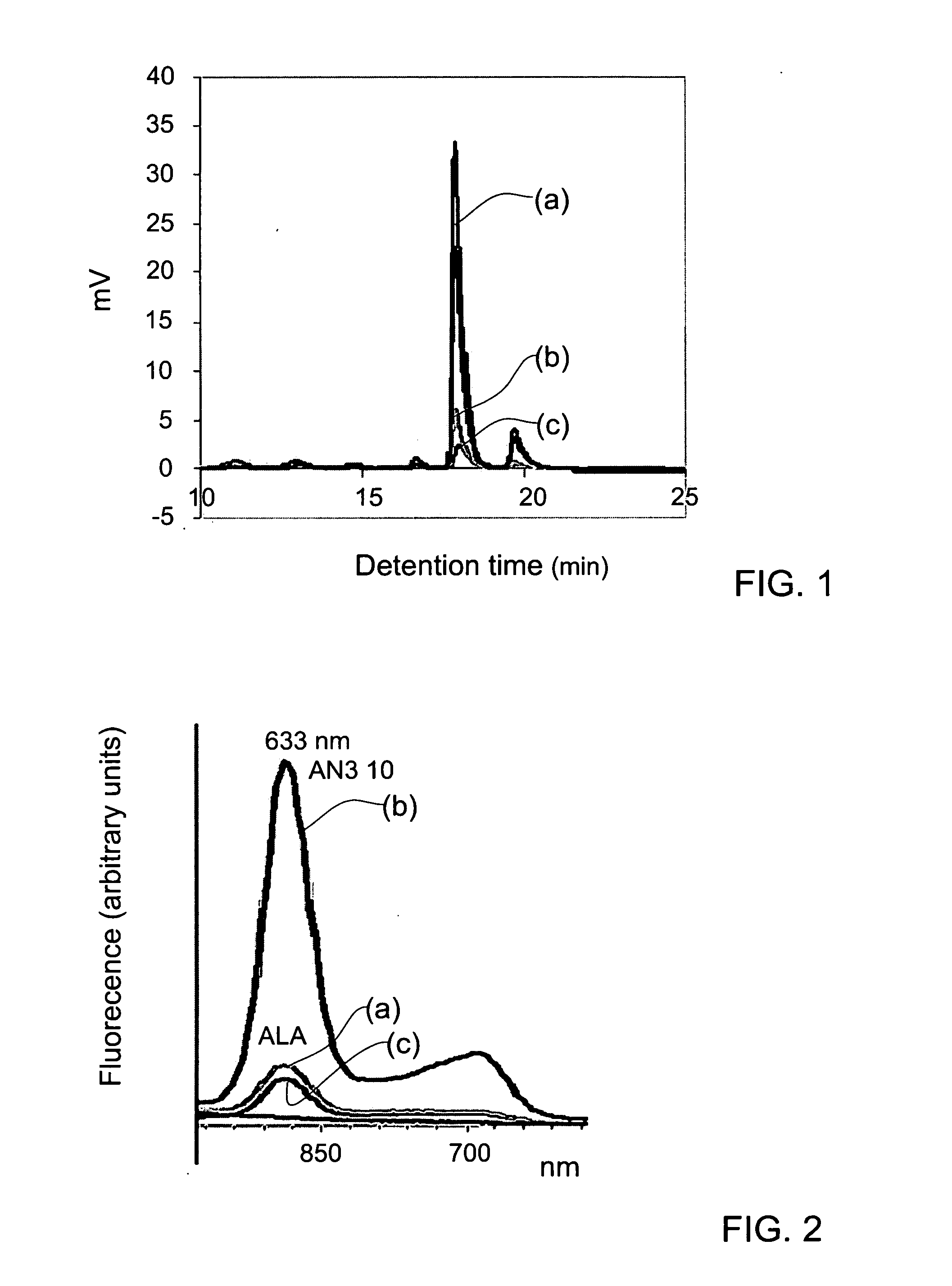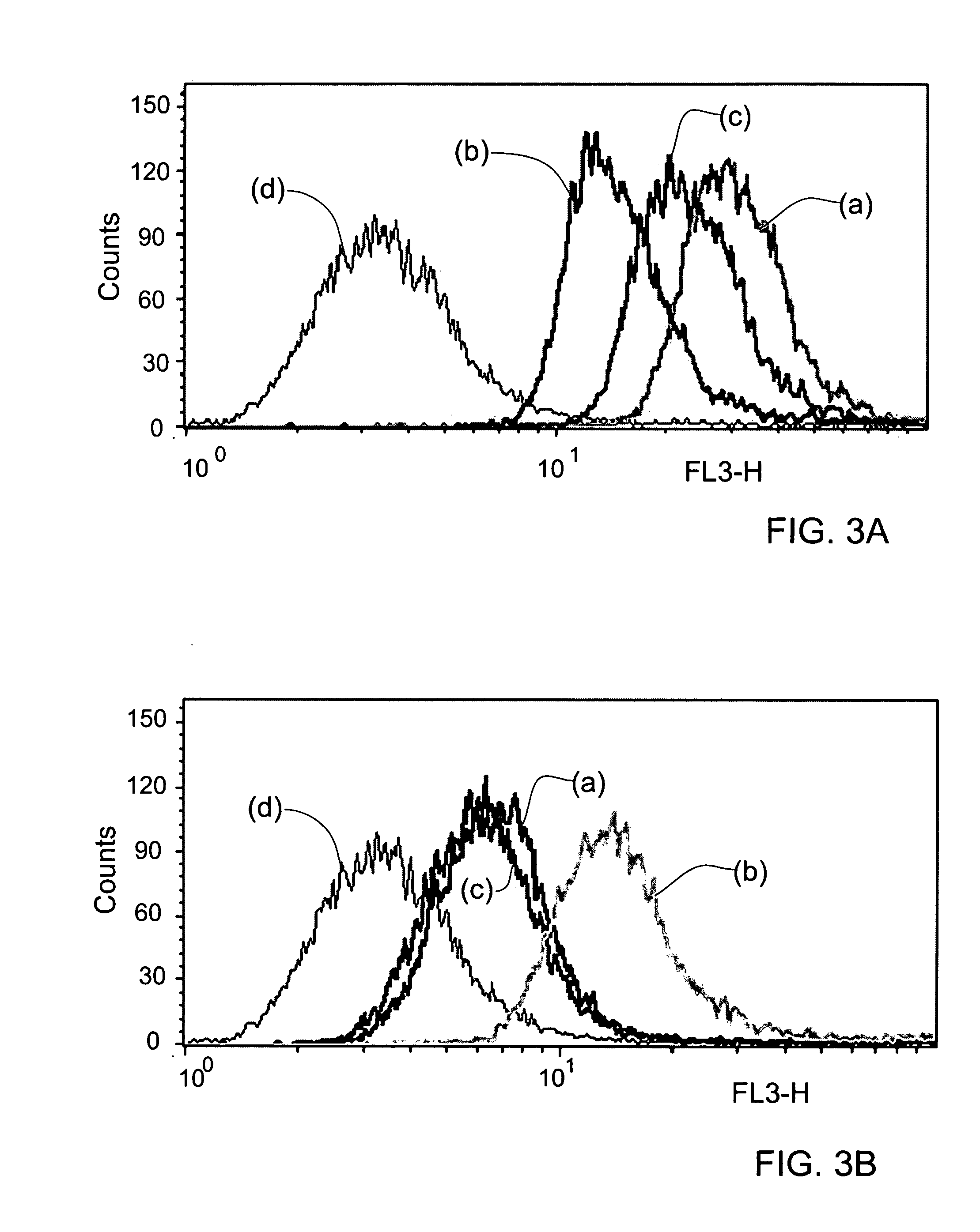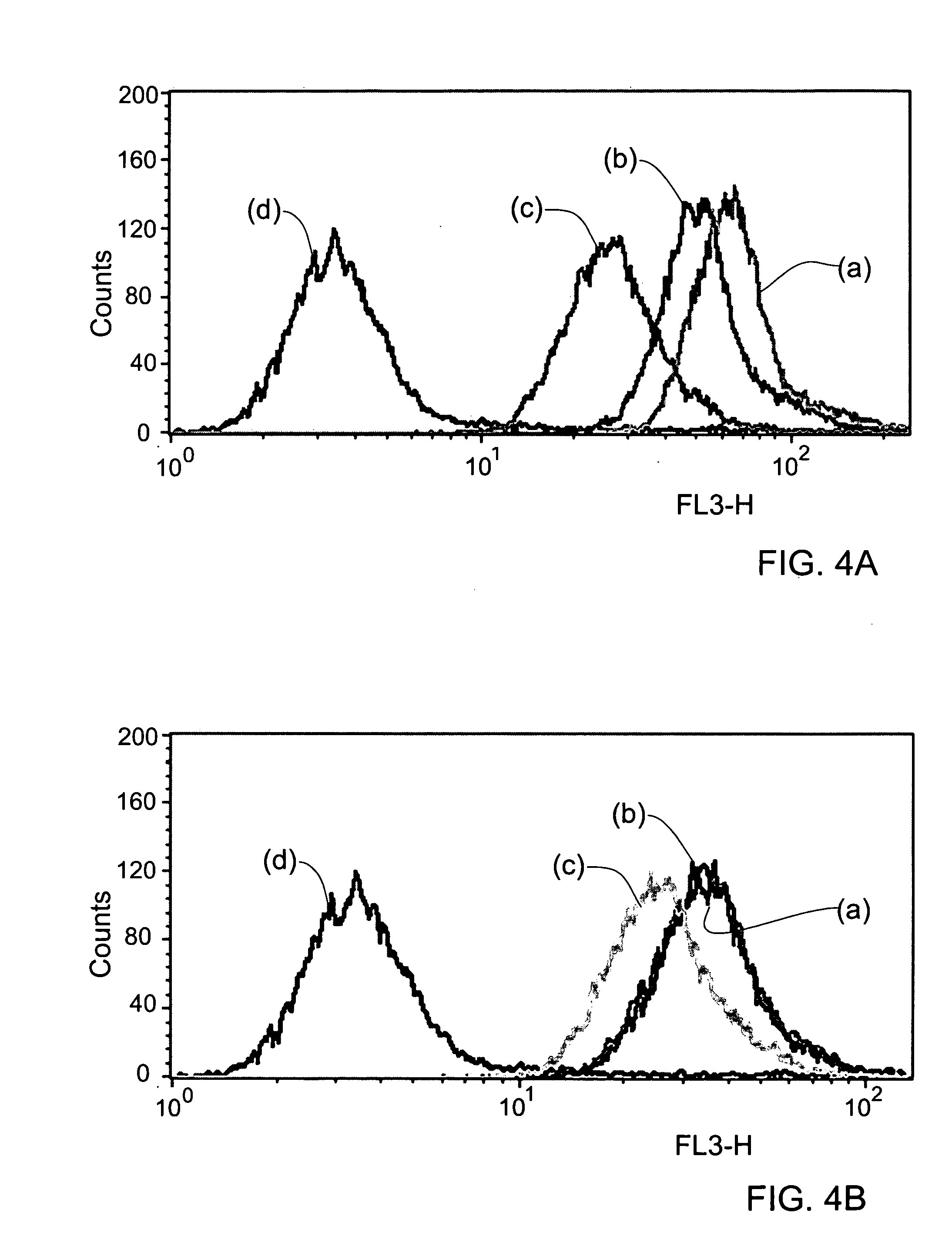5-Aminolevulinic acid salts and their use
a technology of aminolevulinic acid and salt, which is applied in the direction of group 5/15 element organic compounds, organic chemistry, drug compositions, etc., can solve the problems of affecting the stability of ala in pdt, the inability to prevent the degradation of ala in nonaqueous creams and gels, and the inability to completely overcome the blocking of oxo groups
- Summary
- Abstract
- Description
- Claims
- Application Information
AI Technical Summary
Benefits of technology
Problems solved by technology
Method used
Image
Examples
example 1
1: 5-Amino4-oxopentanoic acid benzenesulfonate (ALA-besylate, also referred to herein as “AN-301”)
[0034]
[0035] A solution of N-Boc-5-aminolevulinic acid (1 eq) and benzenesulfonic acid (1 eq) in dry CH2Cl2 under N2 was stirred for 4 h at rt. Water (20 mL) was then added, the aqueous layer was washed with CH2Cl2 and evaporated to give 5-Amino-4-oxopentanoic acid benzenesulfonate as a white solid (80% yield), mp 169-171° C. 1H-NMR (300 MHz, MeOD) ppm δ 2.63 (t, J=6.3 Hz, 2H, CH2CO2), 2.77 (t, J=6.1 Hz, 2H, CH2CO), 4.01 (s, 2H, CH2NH2), 7.43 (m, 3H, 2Hm, Hp), 7.81-7.85 (m, 2H, 2Ho). 13C-NMR (300 MHz, MeOD) ppm 28.37 (CH2CO2), 35.33 (CH2CO), 48.1 (CH2NH2), 126.8 (Co), 129.4 (Cm), 131.4 (Cp), 146.0 (Ci), 175.9 (CO2), 203.1 (CO). MS (ES+): m / z 114 (MH+—H2O, 100). MS (ES−): m / z 157 (M−, 100).
example 2
5-Amino-4-oxopentanoic acid 2-naphtylsulfonate (ALA-napsylate, also referred to herein as “AN-302”)
[0036]
[0037] A solution of N-Boc-5-aminolevulinic acid (1 eq) and 2-naphthylsulfonic acid (1 eq) in dry CH2Cl2 under N2 was stirred for 4 h in rt. Water (20 mL) was then added, and the aqueous layer was washed with CH2Cl2 and evaporated to give 5-amino-4-oxopentanoic acid 2-napthylsulfonate as a white solid (68% yield), mp 172-175° C. 1H-NMR (300 MHz, MeOD) ppm δ2.61 (t, J=6.3 Hz, 2H, CH2CO2), 2.74 (t, J=6.1 Hz, 2H, CH2CO), 4.01 (s, 2H, CH2NH2), 7.56 (m, 2H, H6, H7), 7.9 (m, 4H, H3, H4, H5, H8), 8.63 (m, 1H, H1). 13C-NMR (300 MHz, MeOD)ppm 28.3 (CH2CO2),35.3 (CH2CO), 48.1 (CH2NH2), 124.0 (C3), 126.4 (C4), 127.9 (C1), 128.5 (C7), 128.8 (C6), 129.3 (C8), 128.8 (C5), 132.2 (C2), 133.8 (C9), 135.3 (C10), 175.8 (CO2), 203.1 (CO). MS (ES+): m / z 114 (MH+−H2O, 100). MS (ES−): m / z 207 (M−, 100).
PUM
| Property | Measurement | Unit |
|---|---|---|
| temperature | aaaaa | aaaaa |
| wave length | aaaaa | aaaaa |
| excitation wavelength | aaaaa | aaaaa |
Abstract
Description
Claims
Application Information
 Login to View More
Login to View More - R&D
- Intellectual Property
- Life Sciences
- Materials
- Tech Scout
- Unparalleled Data Quality
- Higher Quality Content
- 60% Fewer Hallucinations
Browse by: Latest US Patents, China's latest patents, Technical Efficacy Thesaurus, Application Domain, Technology Topic, Popular Technical Reports.
© 2025 PatSnap. All rights reserved.Legal|Privacy policy|Modern Slavery Act Transparency Statement|Sitemap|About US| Contact US: help@patsnap.com



